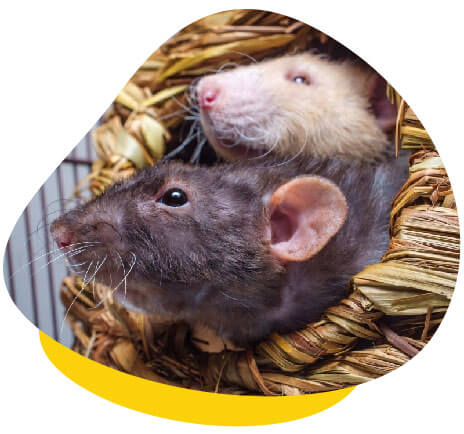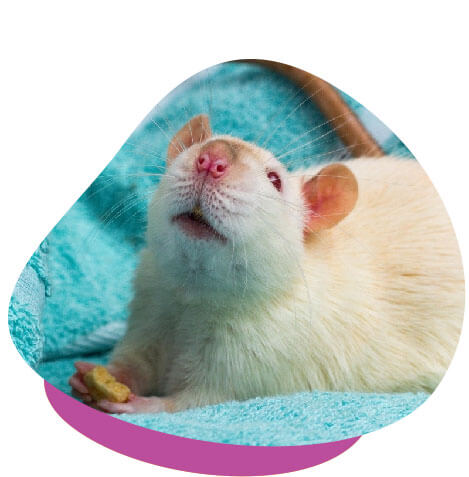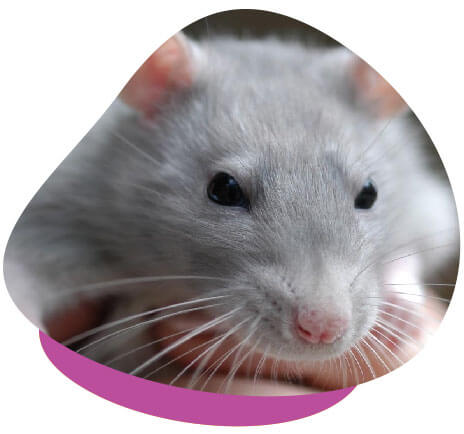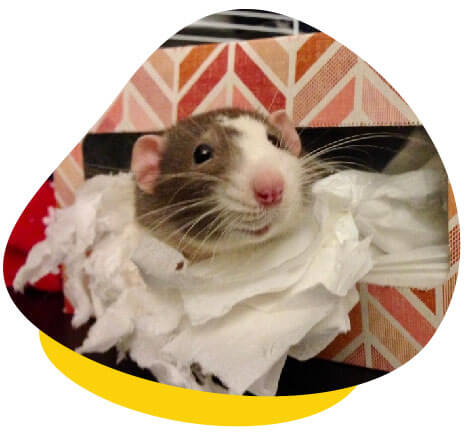Sterilisation (or desexing) is the term commonly used for when pets have surgery to remove part of their reproductive tract, making them unable to breed. Whilst most cats and dogs are sterilised, the procedure is often overlooked in small pet mammals, such as rabbits, guinea pigs, ferrets and rats.
This article discusses the advantages of desexing rats and why surgical desexing may not be the best option for every rat.

Should I Desex My Rat?
Male and female rats can both benefit from desexing. Females have a high incidence of mammary tumours, and by removing the uterus and ovaries, we remove the hormones that can promote mammary tumours to develop.
In males, the main advantage is preventing fighting between adult males and also unwanted pregnancies, as well as reducing the risk of testicular cancers and other problems.
What Are the Different Types of Sterilisation?
The most common form of sterilisation is when an animal undergoes surgery to remove part of their reproductive tract. However, in rats, there is a medical approach to sterilisation. This is temporary but can last 6-12 months depending on the individual rat’s response.
In rats, these medical alternatives have some benefits over surgical desexing and are recommended for many rats, particularly females.

Does It Matter if I Have a Male or Female Rat?
The medical approach uses a drug called Deslorelin in the form of a small implant about the size of a grain of rice. The implant in Australia is known as ‘Suprelorin’. The effects of this drug have been mainly studied in female rats, which means we have more information about how they respond to this drug. In female rats, the medical approach has been shown to last 10-12 months.
At this stage, the medication has only been studied in male rats for six months. This means it is unknown whether the drug lasts longer than this in male rats.

What Does Surgical and Medical Sterilisation Involve?
Both surgical and medical desexing involve a general anaesthetic in rats. In medical desexing, the Suprelorin implant is placed between your rat’s shoulders, which slowly releases a hormone over 6-12 months. The anaesthetic for this is quite short, generally lasting for less than five minutes.
Surgical sterilisation, like most surgeries, also involves general anaesthesia to avoid undue pain and stress to the patient. The anaesthetic time is much longer than medical sterilisation, generally lasting around 20-40 minutes.
What if I Choose Not to Sterilise My Rat?
Whichever form of sterilisation you choose, it is still recommended to get your rat sterilised for several reasons:
- Both male and female rats are prone to developing mammary tumours. It has been shown that sterilisation significantly reduces the risk of these tumours occurring in later life.
- Rats can reproduce at an early age. Both medical and surgical forms of desexing prevent breeding in rats, which allows males and females to be kept together.
What is the Difference in Cost Between Medical and Surgical Sterilisation?
The cost of each is similar. The main advantage of surgical sterilisation is that it is a one-off cost, whereas the Suprelorin implant needs to be repeated every 6-12 months.

Summary
| Surgical sterilisation | Medical sterilisation (Suprelorin) | |
| Is an anaesthetic required? | Yes | Yes, but it is very short |
| Does it need to be repeated? | No | Yes, every 6-12 months |
| Does it work for both sexes? | Yes | Yes, however, males need more frequent implants |
| How often does it need to be repeated in male rats? | Once | Every 6-12 months depending on your situation |
| How often does it need to be repeated in female rats? | Once | Every 10-12 months |
| Does it prevent pregnancy? | Yes | Yes |
| Does it prevent other reproductive diseases such as mammary tumours? | Yes | Most likely yes |

